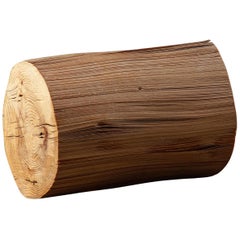Kazuo Kadonaga
Recent Sales
Vintage 1980s Japanese Modern Natural Specimens
Wood
A Close Look at Modern Furniture
The late 19th and early 20th centuries saw sweeping social change and major scientific advances — both of which contributed to a new aesthetic: modernism. Rejecting the rigidity of Victorian artistic conventions, modernists sought a new means of expression. References to the natural world and ornate classical embellishments gave way to the sleek simplicity of the Machine Age. Architect Philip Johnson characterized the hallmarks of modernism as “machine-like simplicity, smoothness or surface [and] avoidance of ornament.”
Early practitioners of modernist design include the De Stijl (“The Style”) group, founded in the Netherlands in 1917, and the Bauhaus School, founded two years later in Germany.
Followers of both groups produced sleek, spare designs — many of which became icons of daily life in the 20th century. The modernists rejected both natural and historical references and relied primarily on industrial materials such as metal, glass, plywood, and, later, plastics. While Bauhaus principals Marcel Breuer and Ludwig Mies van der Rohe created furniture from mass-produced, chrome-plated steel, American visionaries like Charles and Ray Eames worked in materials as novel as molded plywood and fiberglass. Today, Breuer’s Wassily chair, Mies van der Rohe’s Barcelona chair — crafted with his romantic partner, designer Lilly Reich — and the Eames lounge chair are emblems of progressive design and vintage originals are prized cornerstones of collections.
It’s difficult to overstate the influence that modernism continues to wield over designers and architects — and equally difficult to overstate how revolutionary it was when it first appeared a century ago. But because modernist furniture designs are so simple, they can blend in seamlessly with just about any type of décor. Don’t overlook them.
Finding the Right Natural-specimens for You
Natural specimens turn things found in nature, such as rocks, crystals and timber, into art. Sometimes these specimens are hand-carved into sculptures. Other times, antique, new and vintage natural specimens themselves are best displayed in their most untouched state. These pieces range from Victorian-era objects to modern-day designs and include everything from sculptures made from animal horns to works in wood, either as sculptures or merely imposing and provocative chunks of driftwood.
Natural specimens serve as compelling decor in any collection or home. Just as any curious decorative object, such as an ancient scientific instrument or taxidermy mount, will draw attention to your carefully curated home library or mantel, natural specimens can spark interesting discussions about life and art. Whether it’s a piece of ancient pottery formed from natural clay, plants sculpted from metal, sculptures of animals or antique stone, they grant a window into all of nature’s wonders.
Natural specimen sculptures can complement many aesthetics. A rare geode makes a stunning centerpiece in a study or living room. Crystals and rock crystal spheres carved in the 1970s add a sense of etherealness and quiet beauty to any space.
Whatever your taste, the selection of antique, new and vintage natural specimens on 1stDibs includes precisely the right piece for your space.
Read More
10 On-Point Vessels for Flaunting Your Houseplants and Bouquets
Whether you're a genius gardener or have your florist on speed dial, every stem in your home deserves the best.
Jeff Andrews Captures Old Hollywood Glamour in His Cinematic Spaces
Having created extravagant homes for reality TV’s biggest stars, the designer is stepping into the spotlight with his first book.
